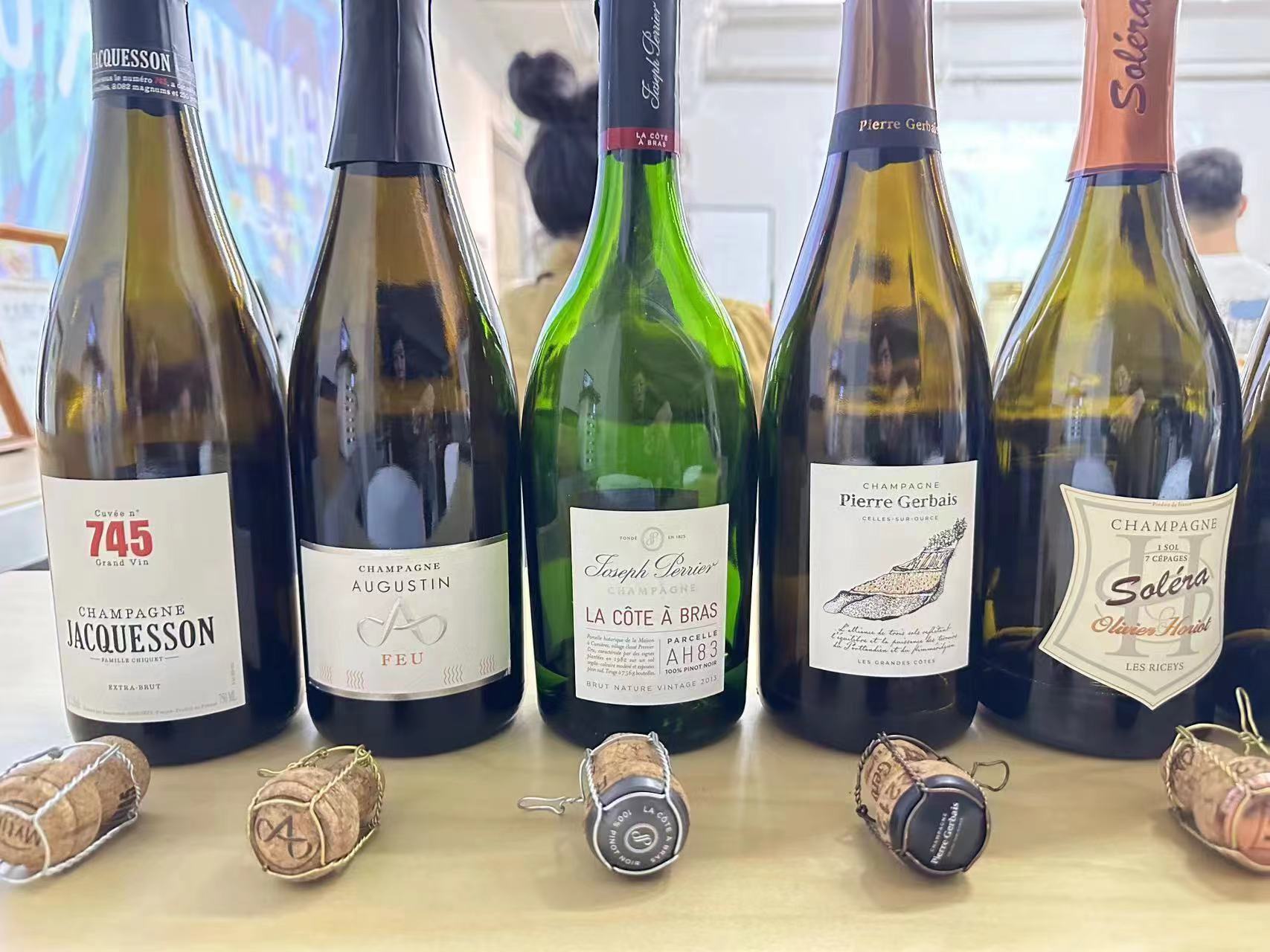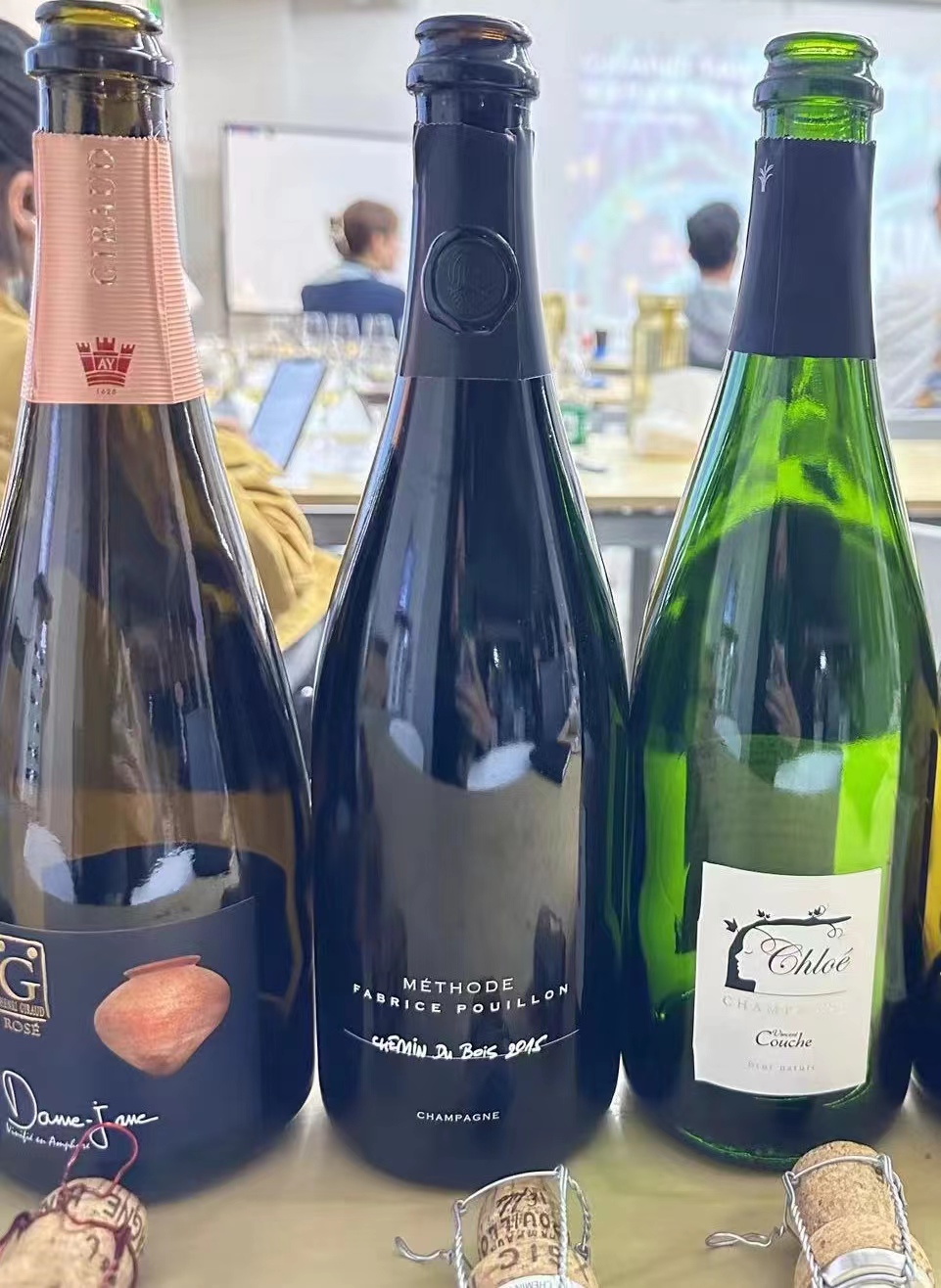Champagne has always been a unique cultural icon in France, from the tables of European royalty in the early days to the cellars full of Champagne bottles of wine geeks around the world. At the top of the sparkling wine pyramid, Champagne represents nobility and elegance, a bubbly wine with a reputation. prestige and history quite unlike that of any other. At the same time, it continues to lead the changing trends of the times.
China’s Champagne market is still an emerging one, with imports that are half those of Korea and one-tenth those of Japan. For the longest time, Chinese wine lovers preferred drinking red wines almost exclusively, though in recent years the move among Chinese consumers away from red wines and towards white wines and bubblies is clear and obvious. So while the market share is currently small, the economic outlook for Champagne (and sparkling wines in general) in China has never been better. Small-grower Champagnes especially (Récoltant-Manipulant refers to independent winegrowers who make Champagne exclusively from the fruit of their own vineyards) are especially in luck currently, as there is a fast rising interest in limited-production, small winery products. In China, it is such products that are becoming the new stars of the Champagne world, dominating social network discussions and magazines, appearing on Michelin-starred restaurant wine lists and in many bistros and natural wine bars. Gone indeed are the days of China being an almost exclusive French Chateau wines paradise.
Small-grower Champagnes have their own audience; their new and different winemaking methods, and their production of often organic and biodynamic wines, not to mention in oxidative styles too, as is the pursuit, common among the young generation of Champagne winemakers, of other aspects that hold appeal today: reduced (or even zero) sugar replenishment; late pomace removal; no or limited use of sulfur; vinification and aging in wooden barrels, concrete tanks, amphorae; use of indigenous, home-grown yeasts and the reliance on the natural sugars of the grapes to complete the secondary fermentation.
These considerations aside, still the most important thing for the Chinese consumer is to make a lovely Champagne. True, whereas once it was the big Champagne brand that dominated, today it is not necessarily so. The lines are blurring between huge wine producer, independent wine grower or even a wine co-op; such distinctions don’t seem to matter so much these days as to what Chinese consumers will buy in wine, though those smaller, hip producers with good bubblies that are fairly priced are most in demand nowadays

The Wines In This Tasting Report
All the wines in this tasting report were sampled on Friday 24 and Saturday 25 in Shanghai where I work.
Jacquesson NV Champagne Cuvée 745 Extra Brut 93
Light lemon yellow with very fine bubbles. Bright, vibrant acidity freshens the palate offering a bright overlay to the mix of stone fruit, toast, preserved lemon, ginger and aniseed flavors. A slightly oxidative note adds complexity, and a mineral finish sets off the savory aftertaste. I was told the blend is 45% Chardonnay, 30% Pinot Meunier and 25% Pinot Noir (but I have seen wildly different blends reported, including one that had no Meunier in it whatsoever; the discrepancy might be due to the specific edition of the Champagne, such as for example, the bottling based on the 2017 vintage does have less Meunier in because of the vintage’s weather characteristics, but go figure) will prove especially good with steamed hairy crabs and other lightly/dressed shellfish and crustaceans. Drinking window: 2024-2032.
Founded in 1798, the winery is one of the oldest in the Champagne region and a pioneer of small farmers. Acquired by the French Artemis Group in 2022, the winery is organically farmed, focuses on the use of oak barrels, and the wines are aged in mash but not filtered for clarification.
Augustin NV Champagne L’Air Cuvée CCXIV 93
Bright golden yellow color, open nose, lemon and kumquat aromas on the palate, pleasing acidity and purity on the palate, hints of biscuit cream, long and rich finish, very pleasant. This is a blend of 50% Chardonnay and 50% Pinot Noir; the roughly 60 years old vineyards are planted on limestone-clay soils, and the wine made with zero added sugar at dégorgement, using natural yeasts only and with no malolactic fermentation done. Aged in amphora and old oak casks. Drinking window: 2024-2034.
Champagne Augustin’s wines are named after Roman numerals: the most iconic set of wines they make are undoubtedly their “Elemental” series, including wines named “Earth”, “Air”, “Fire” and “Water”. Each of these Champagnes offers its own personality and aroma/flavor profile, and all differ significantly from the others.
Pierre Gerbais NV Champagne Lieu-Dit Les Grandes Côtes 91
Golden straw yellow colour. Aromas and flavours of lemon and wild berries, dried rose petals, a hint of tropical fruit as the Champagne warms a little, then mineral and rocky notes and a touch of spice on the finish. A multilayered wine with an endless aftertaste made with 100% certified sustainable Pinot Noir grapes. Drinking window: 2024-2032.
Champagne Pierre Gerbais is now run by Aurélien Gerbais and his wife Audrey Gerbais. Named after Aurélien’s grandfather, Pierre Gerbais, the estate has fifteen hectares of vineyards, Les Grandes Côtes is a single vineyard that sits on Portlandian and Kimmeridgian soils, which bring acidity and a lot of minerals to the wine. It is the Kimmeridgian soil that brings acidity and a lot of minerality to the grapes, while the Portlandian soil, that is more clay-rich, helps produce wines with a more intense aroma.
Olivier Horiot NV Champagne Solera Brut Nature 91
Golden-yellow colour with many small bubbles that rise slowly. Pronounced oxidative aromas of nuts, toast, and caramelized apple pie on the broad, showy nose. Powerful overall, with some oaky barrel notes on the finish, means this Champagne is better suited to full-flavoured entrees rather than raw food, salads, or desserts. It is a complex seven-varieties blend (Chardonnay, Pinot Noir, Pinot Meunier, Pinot Blanc, Petit Mesnil, Arbane, Pinot Gris) of biodynamically (not certified) grapes picked from a single plot in Riceys-sur-Marnes and blended in equal parts. The single varieties are vinified separately wine, undergo malolactic, and remain for one year in oak barrels with zero added sugar (no dosage, in other words), then is aged in large oak barrels with the addition of Réserve Perpétuelle, a multi-vintage blend. Drinking window: 2024-2030
Henri Giraud NV Champagne Brut Rosé Dame Jane 90
Salmon color with a dense stream of bubbles. Herbal aromas such as rosemary and mint dominate the orchard fruit. Then vanilla popcorn flavour in the mouth, with baked apple and caramel flavours, and a very suave opulent texture and an oxidative presence that makes this thick Rosé bubbly suitable for pairing with heavy-duty fare such as roast duck with cherries and grilled or roasted Iberian pork ribs. A blend of 70% Pinot Noir (including 67% still wine) and 30% Chardonnay, crafted entirely in amphora. Bottled and aged for 2 years with lees contact. Drinking window: 2024-2028.
Vincent Couche Champagne NV Brut Nature Solera Chloé 91
Bright amber color. Oxidative nuances to the fruit aromas on the nose, then also in a slightly oxidized style on the palate makes this Champagne taste more mature, with tropical fruit flavours on entry followed by truffle and even cheesy nuances, with medium-level acidity and round body. Ideal with a black truffle and porcini mushroom stew, or chicken cooked in Jura wine. A 65% Pinot Noir and 35% Chardonnay blend, the grapes were harvested from 2011 – 2016, with 25% of the wine renewed each year using a Solera-style aging system, with 50% fermented in oak barrels. Vinification includes zero sugar replenishment, natural yeast fermentation, malolactic fermentation, no sulfur, no filtration. The “solera” term in this case refers to the multi-vintage hybrid aging system (Réserve Perpétuelle) and is not the Solera system used to make sherry in Jerez, Spain. Unlike Sherry, which is blended and aged directly in layered rows of oak barrels, the Solera-style system in Champagne usually involves adding new wine to previous reserves. Vincent Couche has two rows of oak barrels for storing multiple consecutive vintages, which are ultimately blended to produce this Chloé (named after the owner’s wife) Champagne. Drinking window: 2024 ~2030.
Vincent Couche has been certified organic and biodynamic since 2008. But not content with that, the owners joined the “Sonic Experiments Program” of the French research institute Genodics. The researchers are studying the growth of the vines under different sound waves, “listening to the music” of the vines, and analyzing the effect of the sound waves on the resistance of the vines to diseases and pests, in order to avoid the use of chemical pesticides.
Besserat de Bellefon NV Champagne Blanc de Blancs Grand Cru 92
Pale yellow color and a delicate stream of bubbles. Aromas of jasmine, lemon peel and orchard fruit on the invitinmg nose. Then bright and lively acidity refreshes the palate and lifts the intense flavours of grapefruit peel and citrus, plus a touch of honey. This really makes you feel as if you were in an orchard, making for a lovely drink and a very pleasurable experience and memory at every sip. 100% Chardonnay. Drinking window: 2024-2030.
Founded in 1843 by Edmond Besserat in Aÿ, the winery is famous for its low-pressure Champagnes (the normal pressure at which Champagne is bottled is 6 bar, Besserat de Bellefon is bubblies are bottled at only 4.5 bar), which is achieved by adding less than the normal level of sugar and yeast during secondary fermentation and aging (such that the resulting atmospheric pressure is reduced to 4.5 bar). This Champagne undergoes no malolactic fermentation, is aged for three years and is bottled with 8g/L of additional sugar.
Joseph Perrier 2013 La Cote a Bars Brut Nature 89
Golden color with still plenty of bubbles and vibrancy on the nose and in the mouth. There is a curious but not unpleasant soap lather perfumed note to the fruit and floral aromas, but in the mouth, the initially ripe fruit flavors show a slight green streak on the finish. 100% Pinot Noir. Drinking window: 2024-2028.
R.Pouillon 2015 Champagne Method Fabrice Chemin du Bois Extra-Brut NR
Light golden color, with very fine bubbles. Very strong animal fur aroma and flavour at the time of the review, and the oakiness of the barrel maturation was overpowering too. I don’t know if there was a bottle problem, and so I have not rated this wine from a producer that is very highly considered, so I tend to think my bottle was off. The 100% Pinot Noir grapes were sourced from the first growth village of Mareuil-sur-Aÿ on a plot (Chemin du Bois) at the bottom of the slope on chalky-clay soils. Vinification involves natural yeast fermentation, fermentation and aging in new to four years old oak barrels, no sulphur added and maturing 6-18 months in bottle. Drinking window:—
The estate is famous for the Pouillon family’s unique winemaking philosophy, “Méthode Fabrice Pouillon”, is based on the practice of secondary fermentation without the addition of sucrose, relying on the natural sugars of the grapes.


 中文
中文



